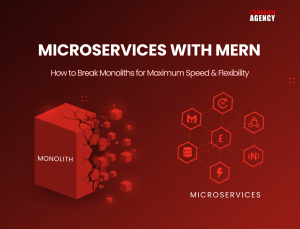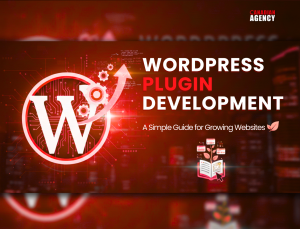The growing demand for content-driven applications across multiple platforms has led to a fundamental shift in how content management systems (CMS) are designed. Traditional monolithic CMS platforms are being increasingly replaced by headless CMS architectures, which offer better flexibility, scalability, and performance. At the heart of this revolution lies the MERN stack—a powerful combination of MongoDB, Express.js, React.js, and Node.js—which has proven to be an ideal tech stack for building robust, scalable, and developer-friendly headless CMS solutions.
In this blog, we’ll explore how to design and build headless CMS platforms using the MERN stack, discuss the core architecture, and walk through the specific responsibilities each layer assumes in a headless system.
Why MERN Stack for Headless CMS Development?
The MERN stack provides a full-stack JavaScript development environment, allowing developers to build both the frontend and backend using a single language—JavaScript. This unified development experience streamlines code management and fosters enhanced team collaboration.
MongoDB provides a flexible, document-based database that accommodates dynamic content structures commonly found in CMS platforms. Node.js and Express offer a high-performance backend with the scalability necessary to serve content across multiple channels. React enables the creation of rich, interactive frontend interfaces that can consume content via APIs. Collectively, these technologies offer the essential components required to develop a modern headless CMS that is both fast and scalable.
What Makes a CMS “Headless”?
A traditional CMS tightly couples the backend and frontend, making content delivery rigid and limiting multi-platform distribution. In contrast, a headless CMS decouples the content management backend from the presentation layer. This architecture exposes the content through APIs—typically RESTful or GraphQL—allowing developers to use any frontend technology to render content.
This separation enables content to be reused across various websites, mobile apps, IoT devices, and other digital platforms without requiring rewriting or duplicating data. The backend focuses purely on content storage, creation, and management, while the frontend is left entirely up to the developers, making the experience modular and highly customizable.
The Role of APIs in Headless Systems
APIs are the linchpin of any headless CMS system. They facilitate seamless communication between the frontend and the backend, providing data in a structured, machine-readable format—usually JSON.
With the MERN stack, APIs are created using Express.js, which runs on Node.js, allowing data stored in MongoDB to be fetched, manipulated, or posted based on various content types. These APIs expose endpoints that enable content editors and frontend developers to perform CRUD operations (Create, Read, Update, Delete), allowing them to work independently of each other.
This API-driven architecture not only supports content delivery but also integrates third-party services like image processing, search engines, analytics, and authentication systems.
Building the Backend with Node.js, Express, and MongoDB
The backend of a headless CMS built with the MERN stack primarily consists of Node.js and Express.js for server-side logic, and MongoDB for data storage.
Node.js provides an event-driven, non-blocking runtime that is ideal for building high-performance, scalable applications. Express.js, a lightweight web application framework for Node.js, handles routing, middleware integration, and request handling.
MongoDB, being a NoSQL database, stores content as documents in a flexible JSON-like format (BSON), making it well-suited for the diverse content models that a content management system (CMS) might need. Whether it’s blog posts, user profiles, product listings, or multimedia assets, MongoDB can adapt its schema without the constraints of traditional relational databases.
Flexible Schema Design
Content types in a CMS are rarely static. Editors might need to add new fields, modify existing ones, or create entirely new types of content. MongoDB’s schemaless nature is beneficial in this context. Developers can define content models with dynamic fields and nested structures, providing flexibility for growth and evolution.
Collections can be designed to handle documents such as Articles, Pages, Media, or Users, each with its own structure and validation logic. Using Mongoose, a popular Object Data Modeling (ODM) library for MongoDB, helps enforce schema definitions, relationships, and data validation while still preserving the flexibility that NoSQL offers.
API Layer with Express
Express acts as the gateway to all CMS content. It defines a clear and organized structure for endpoints, allowing developers to create modular and reusable route handlers for content operations.
For instance, a typical API route might look like this:
- /api/articles – Fetches all articles.
- /api/articles/:id – Retrieves a single article by ID.
- /api/pages – Fetches static page content.
Authentication and authorization can be added using middleware, ensuring that only permitted users have access to content creation or editing functionalities.
Additionally, Express allows seamless integration of third-party libraries for logging, caching, and error handling, all of which are critical for building a production-ready CMS.
Media Handling and Uploads
Content often includes media assets such as images, videos, and PDFs. Handling these uploads effectively is crucial for a content management system (CMS). The MERN stack supports media handling through middleware, such as Multer in Express, for file parsing and temporary storage.
Uploaded files can be stored locally or uploaded to cloud storage platforms, such as Amazon S3 (AWS S3) or Cloudinary. Once stored, references to these files are saved in MongoDB, allowing frontend applications to fetch and display them via URLs.
Media optimization, such as resizing, compressing, and format conversion, can be automated during the upload process, enhancing performance across different devices.
Frontend with React
React serves as the frontend framework in a headless CMS built on the MERN stack. It enables the creation of responsive, dynamic, and modular UIs that consume content via the backend APIs. Since content is decoupled from its presentation, React components are responsible for rendering structured data received from Express APIs.
With React, developers can implement state management (using Redux or the Context API), route management (via React Router), and UI libraries (such as Material-UI or Tailwind CSS) to build rich, editorial interfaces or public-facing content platforms.
Modular Content Components
React encourages the use of reusable components. In the context of a CMS, components like ArticleCard, ImageGallery, HeroBanner, or ContentBlock can be designed to render specific content types. These components dynamically pull data from APIs, allowing them to be used across various views and layouts.
This modularity simplifies layout management, enhances code readability, and ensures that changes made in one part of the system do not break others. It also allows content editors to structure pages using predefined components, ensuring design consistency.
Dynamic API Rendering
React applications powered by APIs from the CMS backend can dynamically render content based on user interactions or URL parameters. For example, a route like /articles/:slug can fetch the corresponding article and render it in a pre-defined template.
This dynamic content rendering model is not only beneficial for scalability but also for performance, especially when integrated with server-side rendering (SSR) or static site generation (SSG) techniques via frameworks like Next.js, which extend React’s capabilities.
Multi-Device Compatibility
One of the key advantages of a headless CMS is its ability to deliver content across various platforms. The MERN stack supports responsive design principles and API-first development, enabling the duplicate content to be rendered across multiple devices, including mobile apps, web browsers, smart TVs, and more.
React’s component-based structure ensures consistent UI rendering, while APIs can deliver content in tailored formats based on user-agent headers or query parameters. This ensures that the user experience remains seamless and optimized, regardless of the device.
Enhancing the CMS
User Roles and Permissions
A full-fledged CMS must support user roles, such as Admin, Editor, Contributor, and Viewer, each with specific permissions. This can be implemented using role-based access control (RBAC) within the Express middleware layer. JWT (JSON Web Tokens) can be used for secure user authentication and session management.
Admins may have access to content publishing, user management, and system settings, while contributors may only draft or edit specific content types. This enhances editorial workflows and safeguards content integrity.
Real-Time Editing
Real-time editing and collaboration are valuable features for modern CMS systems. Using WebSockets or libraries like Socket.IO with Node.js enables multiple users to collaborate on content in real-time, reflecting changes instantly.
This feature mimics the functionality seen in platforms like Google Docs, where changes made by one user are immediately visible to others, enhancing productivity and coordination within editorial teams.
Content Search Integration
Search functionality is crucial in any content management system (CMS), as it enables users to locate and retrieve content quickly. This can be implemented using MongoDB’s text indexes or by integrating with powerful search engines, such as Elasticsearch.
Search can be customized with filters, faceted navigation, and keyword suggestions to improve the user experience. A headless CMS can expose search capabilities via its API, allowing frontend applications to render results with flexibility and speed.
Conclusion
Designing a headless CMS platform using the MERN stack is a modern, efficient approach that addresses the limitations of traditional monolithic systems. The synergy of MongoDB, Express.js, React, and Node.js enables developers to build flexible, scalable, and robust content platforms that adapt to the demands of multi-device content delivery.
From backend data modeling to frontend dynamic rendering, the MERN stack provides a cohesive environment where content creation, management, and presentation are decoupled yet seamlessly integrated. Whether you are building a blog engine, a content hub for a SaaS product, or a multi-channel publishing platform, the MERN stack equips you with the tools to deliver a high-performing, future-ready headless CMS.




